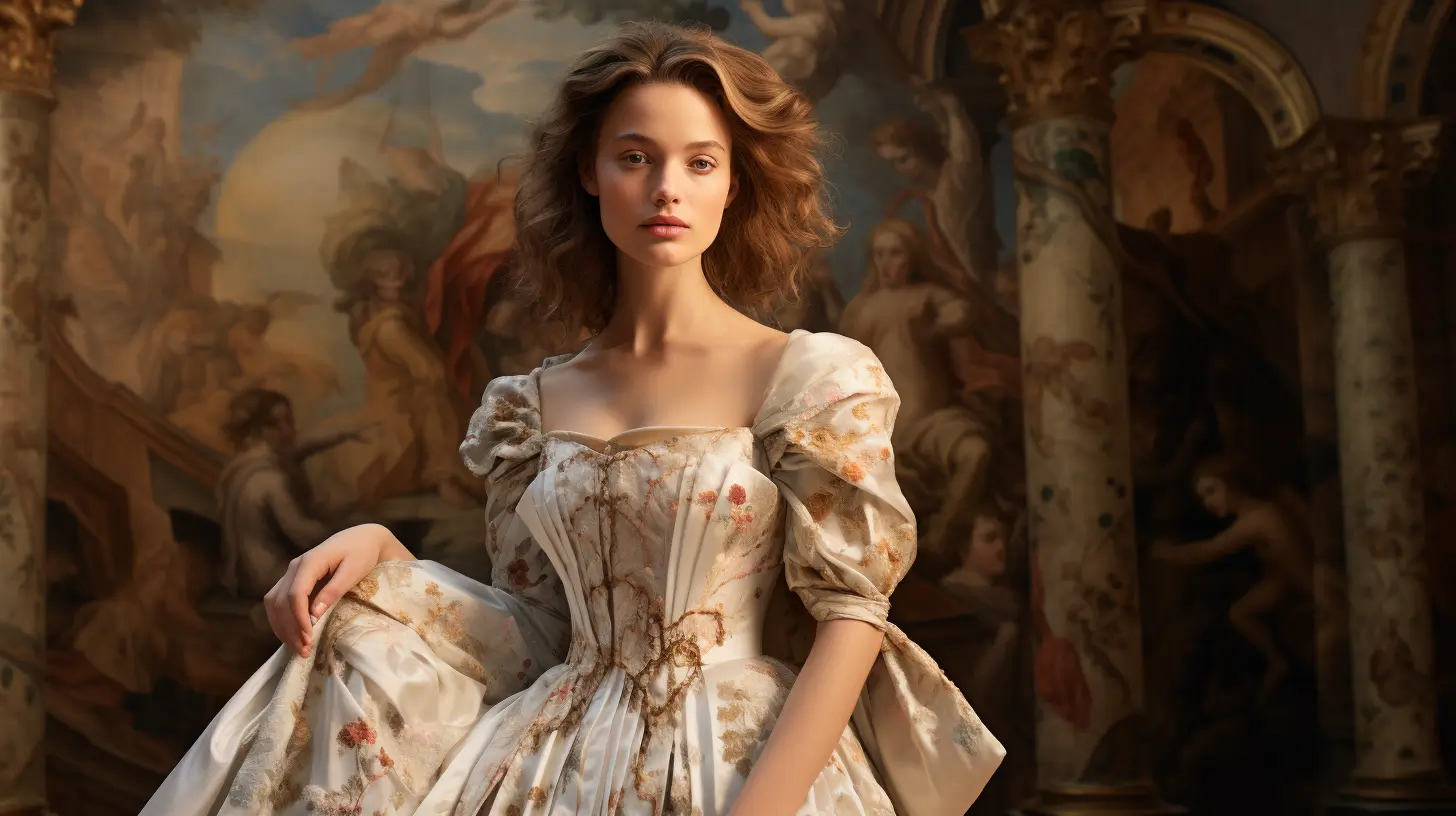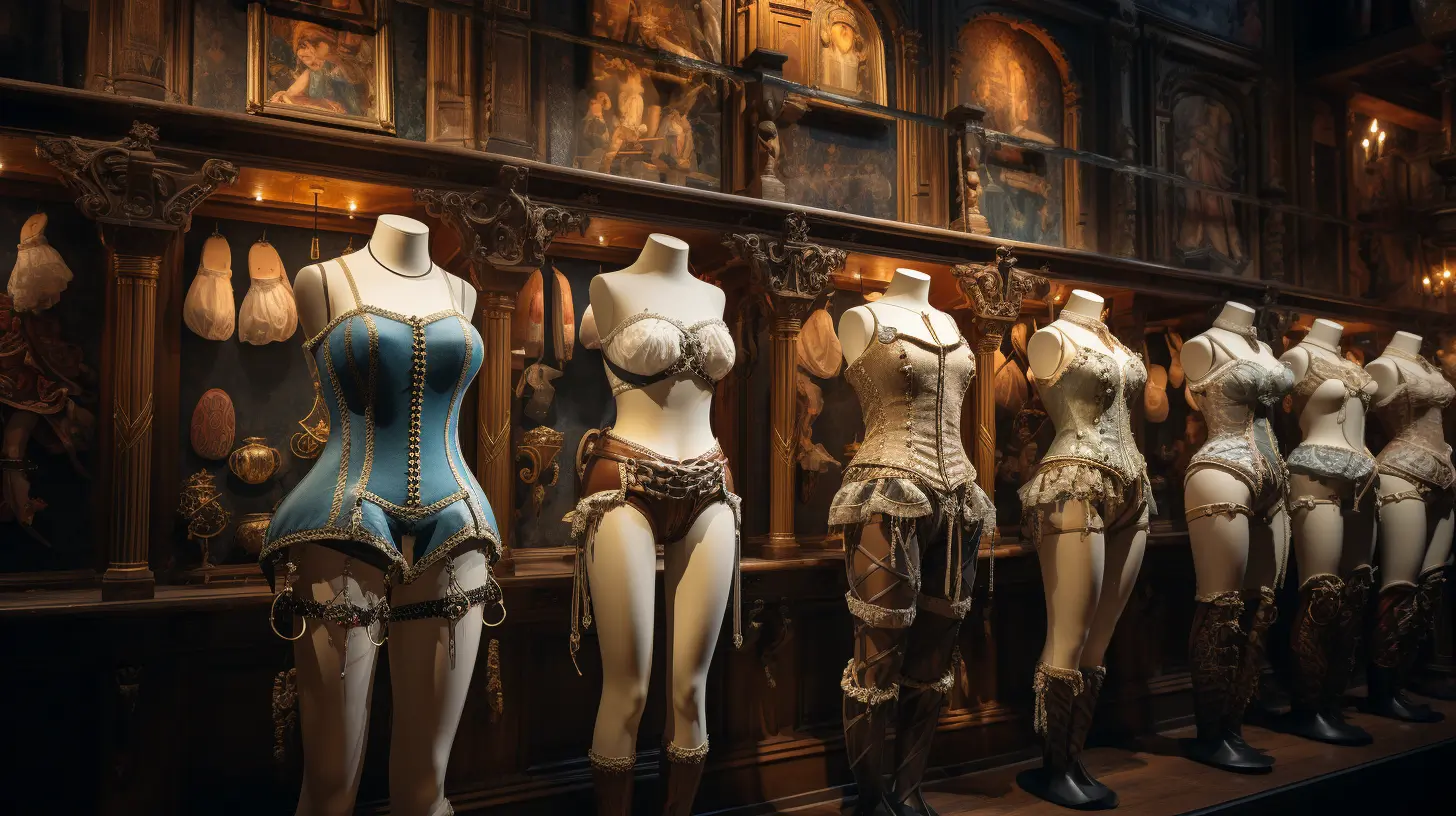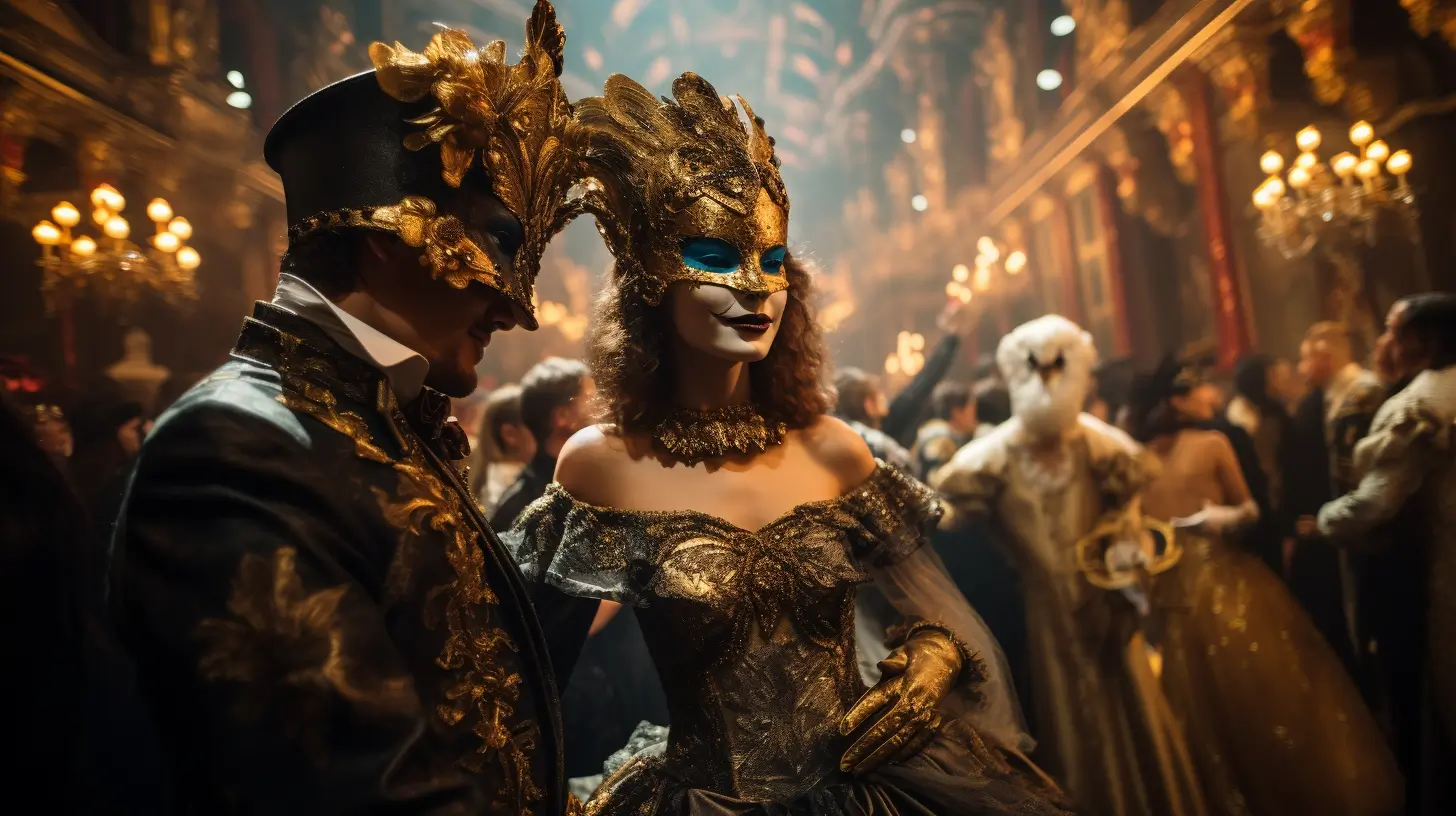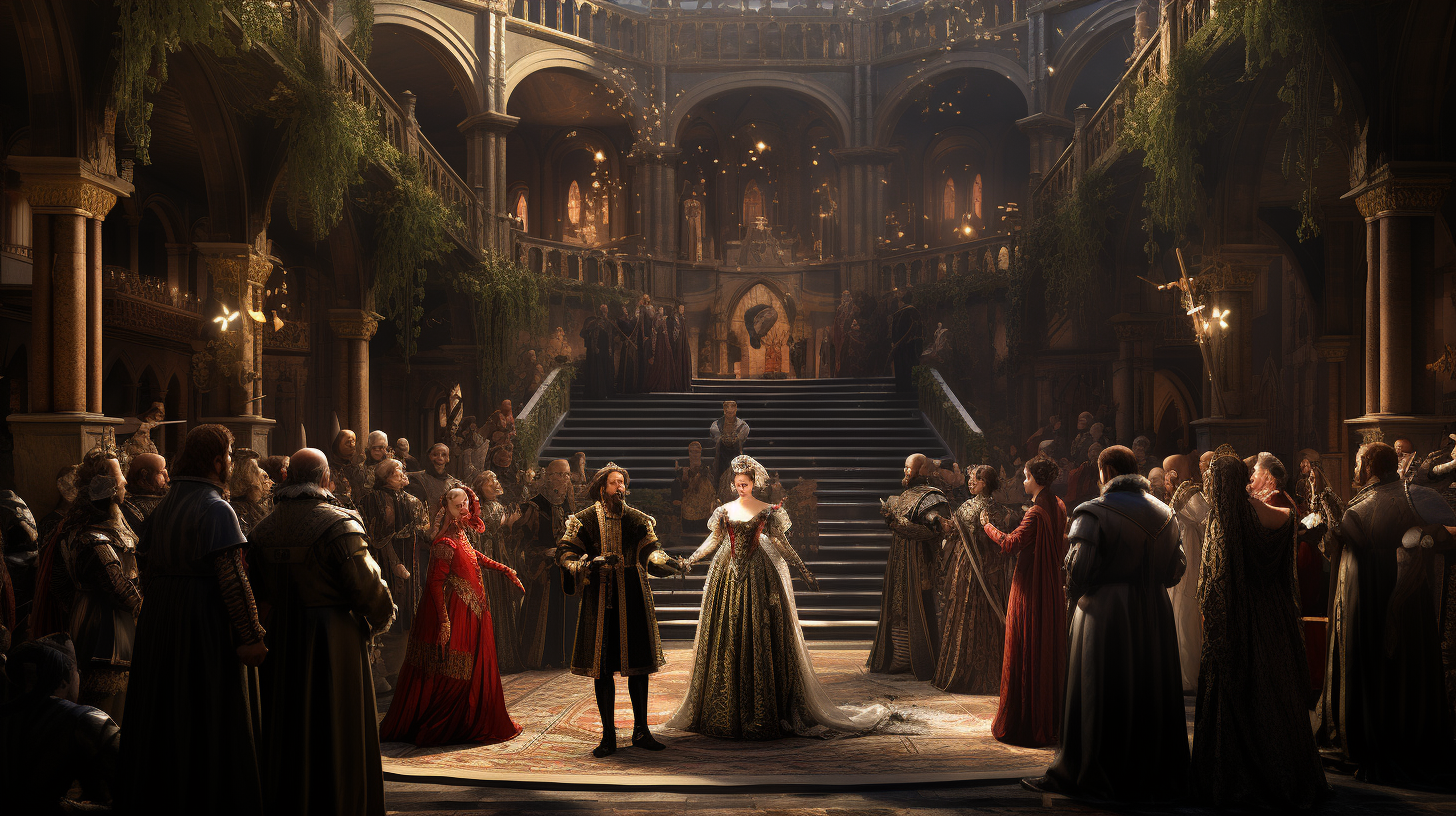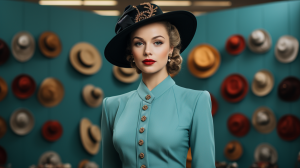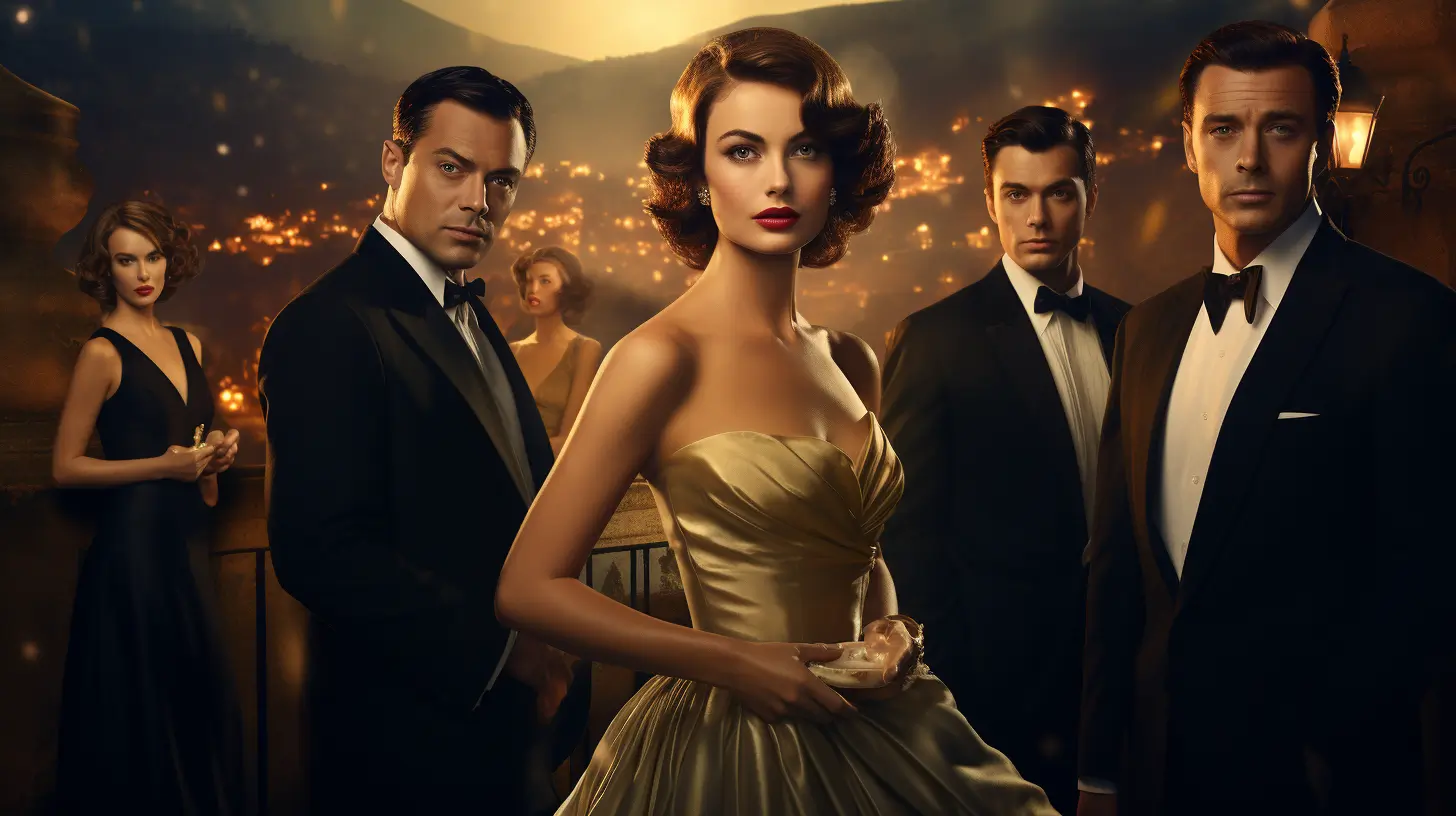
Hollywood Glamour and 1940s Fashion Influence
Hollywood’s Influence: The Glittering Dream Factory
Picture this: The dazzling lights of Hollywood Boulevard, the rush of cameras, and the allure of the silver screen. The 1940s marked a golden age of cinema, a period when dreams were woven into celluloid and projected onto the world stage. It was here, in the heart of Tinseltown, that the magic of Hollywood’s silver screen spilled over, seeping into the very fabric of American life.
Starlets Shining Bright: In those heady days, Hollywood was a place where legends were born. Starlets like Rita Hayworth, Lauren Bacall, and Bette Davis graced the screens, capturing the hearts of audiences worldwide. Their allure extended far beyond their acting talents; they became the epitome of glamour and style.
The Film Noir Mystique: As the decade unfolded, a different kind of magic emerged from the shadows. Film noir, with its moody cinematography and enigmatic storytelling, cast a spell on viewers. This genre wasn’t just about movies; it was a lifestyle. Men in sharp suits and women in sleek dresses took center stage, their fashion reflecting the intrigue and allure of the dark narratives.
A Wardrobe to Remember: Hollywood’s influence on 1940s fashion was undeniable. Gowns that flowed like liquid silk, tailored suits that exuded confidence, and accessories that added the finishing touches—all designed to make an impression both on and off-screen. It wasn’t just about clothing; it was about crafting an identity.
The Enduring Legacy: Now, picture Hollywood’s indelible mark on the era’s fashion legacy, captured in every vintage photograph and film reel. The spirit of Hollywood in the 1940s, where dreams and reality intertwined, continues to captivate and inspire fashion enthusiasts to this day.
Image : photograph from the 1940s, capturing the essence of Hollywood’s golden age. In the foreground, a stylish starlet stands in an elegant gown, her silhouette bathed in the soft glow of studio lights. Beside her, a dapper leading man in a tailored suit exudes charisma. This iconic image symbolizes the glamour and allure that Hollywood cast upon the fashion of the era, a timeless snapshot of a bygone era.
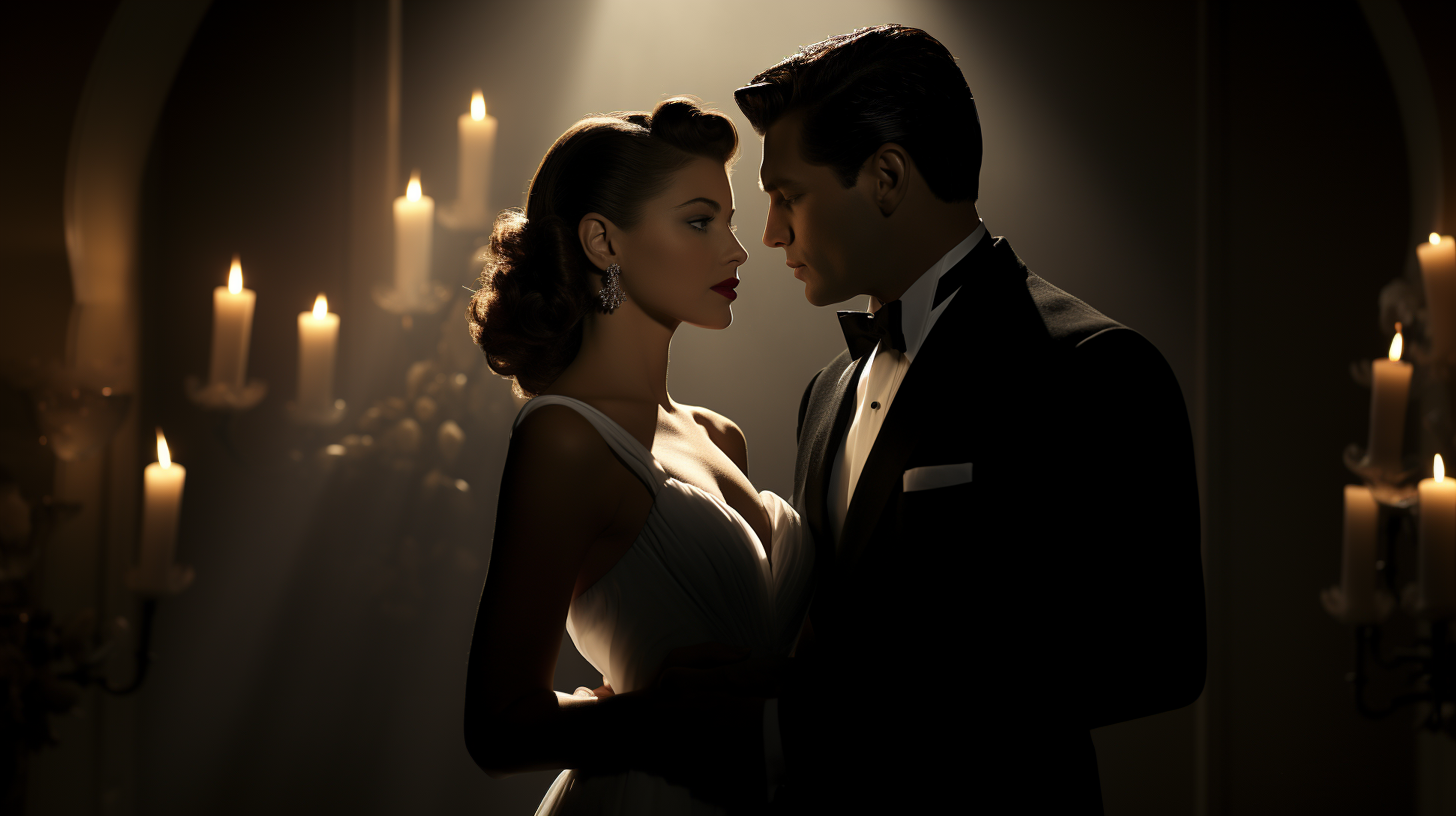
Hollywood’s Elegance and Red Carpet Magic
Icons of Elegance: In the glitzy realm of Hollywood, where every step was a potential photo opportunity, a handful of actresses emerged as true icons of elegance. These were women who not only conquered the silver screen but also left an indelible mark on 1940s fashion.
Grace Kelly’s Timeless Grace: Imagine the grace and poise of Grace Kelly, the epitome of timeless elegance. Her tailored suits, pearl necklaces, and refined taste set the bar high for sophistication. Women flocked to emulate her impeccable style, giving rise to the ‘Grace Kelly look.’
Audrey Hepburn’s Enduring Charm: Now, picture Audrey Hepburn, a beloved figure known for her charm and simplicity. Her iconic little black dress in “Breakfast at Tiffany’s” became a symbol of chic minimalism. It’s remarkable how a single outfit can influence an entire generation of fashion enthusiasts.
Influence on Women’s Fashion: These Hollywood starlets weren’t just actresses; they were trendsetters. Their fashion choices transcended the silver screen, influencing the wardrobes of women around the world. The tailored lines, classic accessories, and timeless beauty became the essence of 1940s elegance.
Glamour on the Red Carpet: Hollywood’s influence didn’t stop at movie premieres. On the red carpet, where celebrities showcased their finest attire, starlets continued to shape fashion trends. Picture Marilyn Monroe’s iconic white halter dress or Elizabeth Taylor’s dazzling jewels. These moments became etched in fashion history.
Iconic Red Carpet Moments: Think about the Oscars in the 1940s, where Hollywood’s finest gathered in their finest attire. Joan Crawford’s shoulder-padded gowns, Ingrid Bergman’s sophisticated ensembles, and the breathtaking jewelry worn by stars—all created a spectacle that captivated audiences worldwide.
Image Description: Envision a vintage photograph capturing Hollywood starlets of the 1940s on the red carpet. Grace Kelly stands tall in a tailored suit, radiating elegance. Audrey Hepburn’s iconic little black dress is a symbol of timeless chic. In the background, the red carpet shimmers with glamour, and the stars of the silver screen dazzle in their finest attire. This image encapsulates the influence of Hollywood’s leading ladies on 1940s fashion, a moment frozen in time, forever elegant and enchanting.
Embracing the Shadows: Film Noir’s Fashion Influence
The Influence of Film Noir: Imagine a world where shadows conceal secrets, and danger lurks in every dimly lit alley. This was the essence of film noir, a genre that emerged in the 1940s. It wasn’t just a cinematic movement; it was a style revolution that left an indelible mark on fashion.
From Silver Screen to Street: Film noir brought with it an air of mystery and sophistication. The emergence of this genre in the 1940s saw a shift in fashion. Sleek lines, noir-inspired ensembles, and a darker color palette became the order of the day. Film noir’s themes of suspense, intrigue, and seduction translated seamlessly into clothing.
Femme Fatales and Their Style: Envision the femme fatales of film noir—sultry, enigmatic, and impeccably dressed. These characters, with their stylish allure and smoky gazes, became fashion symbols of the era. Picture Veronica Lake’s peek-a-boo hairstyle, Rita Hayworth’s satin gowns, and Lauren Bacall’s tailored suits. Their fashion choices exuded a sense of power and danger that captivated audiences.
Dark and Mysterious: Film noir’s impact wasn’t limited to clothing alone; it seeped into every aspect of fashion. Think about trench coats, fedoras, and noir-inspired accessories that became essential elements of 1940s fashion. The genre’s dark aesthetic and themes were embraced wholeheartedly, creating a style that was both alluring and enigmatic.
Image Description: Visualize a scene from a classic film noir, where the shadows play tricks on the eye, and a femme fatale stands in the dimly lit room. She wears a sleek, figure-hugging dress, her hair perfectly coiffed. The atmosphere is charged with tension and allure. This image encapsulates the influence of film noir on fashion, where mystery and style intertwine in a cinematic embrace. It’s a snapshot of an era where fashion embraced the shadows, creating an unforgettable allure.
Noir’s Arrival: An Atmosphere of Intrigue
The Influence of Film Noir: You know that moment when you step into a dimly lit bar, and the air is thick with secrets? Well, that’s the feeling film noir brought to the 1940s. It was as if the world decided to cast a perpetual shadow over everything. This genre, born in the post-war era, wasn’t just about movies; it was a cultural phenomenon.
A Darker Palette: Picture this: the streets of Los Angeles or New York, bathed in an eerie chiaroscuro. The emergence of film noir on the silver screen had a profound impact on fashion. It wasn’t just about the stories; it was about the way characters dressed and the worlds they inhabited. Suddenly, gray flannel suits, trench coats, and fedoras became the height of sophistication.
Femme Fatales and Their Style: Now, let’s talk about the femmes fatales, those enigmatic sirens who walked the fine line between danger and desire. They wore their darkness like a badge of honor. Sultry silk dresses, high-contrast makeup, and sultry hairstyles were their signature looks. Think of Barbara Stanwyck in “Double Indemnity” or Lana Turner in “The Postman Always Rings Twice.” Their style was a blend of seduction and danger, an irresistible combination.
Dive into the Shadows: Film noir didn’t just influence fashion; it became a lifestyle. From the moody aesthetics to the complex characters, it was a world where secrets were buried deep, and shadows held their own mysteries. This influence seeped into clothing choices, creating an aesthetic that was both alluring and mysterious.
Image Description: Imagine a smoky, dimly lit room with a femme fatale at the center. She’s dressed in a form-fitting black dress that clings to her every curve. Her red lipstick contrasts sharply with her pale complexion, and her gaze holds a promise of intrigue. In the background, the play of light and shadow adds depth to the scene, creating an atmosphere of mystery. This image captures the essence of film noir’s influence on fashion, where darkness and allure collide to create an unforgettable style.
Fashion’s Battlefront: The Military Influence
Utility and Practicality: Picture this – a world at war, where every resource counts, and fashion becomes a reflection of necessity. The 1940s saw a transformation in clothing driven by practicality. It wasn’t just a trend; it was a response to wartime conditions.
Clothing as a Resource: In the midst of global conflict, clothing became a valuable resource. Every garment needed to serve a purpose. Utility became the name of the game. Practical aspects like pockets, zippers, and adjustable elements were incorporated into everyday attire.
Wartime Influence: Think about how wartime conditions influenced clothing choices. Fabric rationing meant that designers had to get creative. Imagine dresses made from parachute silk or men’s suits with minimalistic designs. The focus shifted from extravagance to functionality.
The Rise of the Utility Suit: Now, picture the utility suit, a symbol of practical fashion. These suits, often worn by women, represented a departure from traditional attire. Utility suits featured streamlined designs, minimalistic embellishments, and sturdy fabrics. They were versatile and could be worn for various occasions, from factory work to social gatherings.
Design Elements and Versatility: Dive into the design elements that made utility suits so popular. Imagine tailored jackets with cinched waists, wide-legged trousers, and practical details like large pockets. These suits allowed women to move freely and take on various roles in society.
Image Description: Visualize an image of a 1940s utility suit worn by a confident woman. The suit features a tailored jacket with a cinched waist and large pockets. The trousers are wide-legged, allowing for ease of movement. The fabric exudes durability and functionality. In the background, you can sense the wartime atmosphere, with images of women working in factories and men in military uniforms. This image encapsulates the military influence on 1940s fashion, where practicality and style intertwined in a time of global change.
Leading Men: Style Icons of the Silver Screen
Leading Men and Their Style: Let’s turn the spotlight onto the dapper gentlemen of Hollywood’s golden age. These leading men weren’t just actors; they were style icons who left an indelible mark on men’s fashion in the 1940s.
Cary Grant’s Timeless Elegance: Picture Cary Grant, the epitome of timeless elegance. With his impeccably tailored suits, classic neckties, and an air of confidence, he set the standard for sophistication. His influence on men’s fashion in the 1940s was undeniable, and his style remains a benchmark of timeless appeal.
Hollywood’s Gentlemen: Now, imagine the leading men of the era—Humphrey Bogart, Clark Gable, and James Stewart. Their fashion choices on and off-screen reflected a blend of charisma and class. From impeccably tailored suits to perfectly knotted ties, they embodied the essence of suave masculinity.
Sharp Dressing in Film: Hollywood had a knack for portraying male characters as stylish and suave. Think about Bogart’s trench coat in “Casablanca” or Gable’s white dinner jacket in “Gone with the Wind.” These characters weren’t just fictional; they were aspirational. Their attire showcased the enduring appeal of classic men’s fashion from the era.
Timeless Appeal: Classic men’s fashion from the 1940s continues to inspire contemporary style. The sharp dressing, attention to detail, and emphasis on well-fitted suits remain relevant. It’s a testament to the enduring influence of Hollywood’s leading men on men’s fashion.
Image Description: Envision an image that captures the essence of Hollywood’s leading men in the 1940s. Cary Grant stands tall in an impeccably tailored suit, exuding timeless elegance. Surrounding him are iconic scenes from classic films, showcasing the suave and stylish characters played by leading men of the era. The image embodies the influence of Hollywood’s gentlemen on 1940s fashion, a snapshot of an era where style and sophistication reigned supreme.
Silhouettes and Fabrics: Crafting 1940s Elegance
Hourglass Figure and Tailoring: Imagine the iconic hourglass figure of the 1940s woman. This era celebrated curves, and fashion was all about enhancing that silhouette. The hourglass figure was the gold standard of femininity. Corsets and tailoring techniques were employed to create a cinched waist and accentuated hips.
Creating the Ideal Shape: Think about the tailoring techniques used to achieve this look. Seams, darts, and precise measurements were essential. Women embraced garments that nipped at the waist, creating an hourglass shape. The goal was to achieve a look of effortless elegance, where clothing celebrated the natural curves of the body.
Fabrics and Rationing: Now, let’s delve into the world of fabrics during the 1940s. Imagine a world at war, where resources were scarce, and fabric rationing was a reality. Silk, nylon, and other luxury materials became scarce commodities. Women had to get creative with their clothing choices.
Practicality Meets Style: Explore the fabrics used in 1940s fashion and their availability during wartime. Wool, cotton, and rayon became more prevalent. Women embraced practicality while still maintaining style. Picture dresses made from parachute silk or cotton prints that showcased vibrant patterns despite limited resources.
The Influence of Rationing: Rationing affected clothing choices in profound ways. Hemlines rose, and skirts became narrower to conserve fabric. Accessories and embellishments were simplified, yet women still managed to infuse their attire with elegance and creativity.
Image Description: Visualize an image that captures the essence of 1940s fashion. In the foreground, a woman stands confidently, showcasing her hourglass figure in a tailored dress. The dress features meticulous tailoring, with seams and darts enhancing her curves. In the background, a wartime scene unfolds, with rationing posters and fabric swatches. This image encapsulates the art of creating the ideal silhouette and the influence of wartime rationing on 1940s fashion, where practicality and elegance merged seamlessly.
Fashion Rebounds: Post-War Evolution
Fashion Rebounds: Picture a world emerging from the shadow of war, eager for change and renewal. The post-war period of the late 1940s marked a significant turning point in fashion. It was a time of transition and evolution, where clothing styles shifted rapidly.
From Austerity to Opulence: Think about the impact of the post-war period on fashion. After years of rationing and practicality, there was a hunger for opulence and extravagance. Women’s fashion saw the return of longer hemlines, fuller skirts, and a return to glamour. It was as if fashion was reclaiming its rightful place in the spotlight.
Rapid Changes: Envision how clothing styles changed at a breakneck pace. The late 1940s saw the birth of the “New Look” by Christian Dior, featuring tiny waists, full skirts, and an aura of luxury. It was a stark departure from the utilitarian styles of the war years, and it set the tone for a new era of fashion.
Hollywood’s Ongoing Influence: Now, let’s talk about Hollywood’s enduring role in shaping fashion. Despite the post-war challenges, Hollywood continued to influence style in the late 1940s. Films like “Gentlemen Prefer Blondes” and stars like Marilyn Monroe played a pivotal role in defining the fashion of the era.
Glamour Returns: The late 1940s were marked by Hollywood stars embracing glamour and sophistication. Picture Monroe’s iconic pink gown in “Gentlemen Prefer Blondes” or the elegance of stars like Audrey Hepburn and Grace Kelly. Hollywood’s fashion influence was still going strong, even in the face of post-war adjustments.
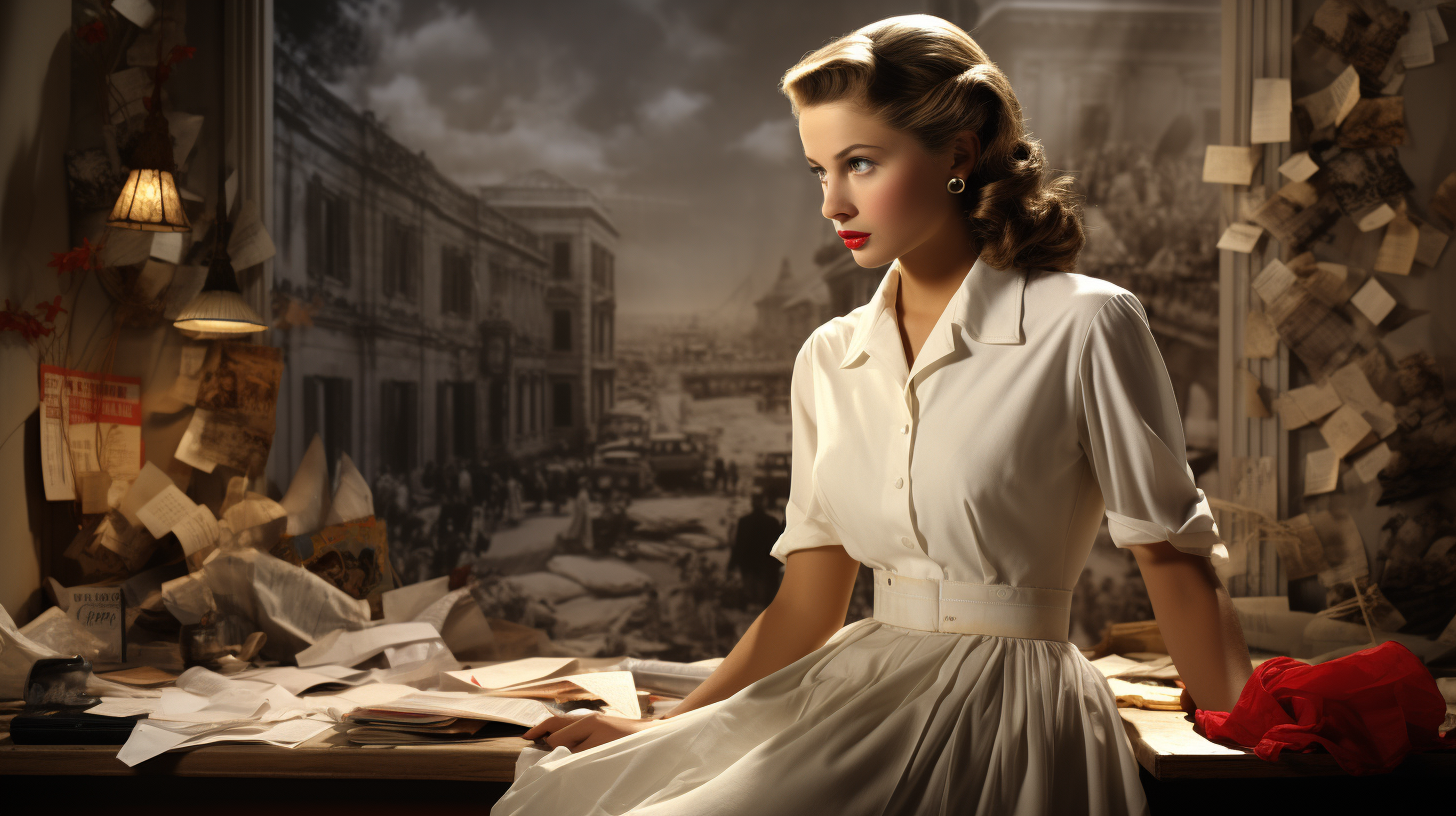
1940s Fashion: A Timeless Influence
Hollywood Revivals: Imagine modern celebrities walking the red carpet, channeling the glamour of the 1940s. The influence of this era on contemporary fashion is undeniable. Hollywood, ever the trendsetter, continues to draw inspiration from the past.
Red Carpet Moments: Think about the red carpet moments influenced by the 1940s. Stars like Cate Blanchett, Emma Stone, and Scarlett Johansson have graced premieres and award shows in outfits reminiscent of Hollywood’s golden age. Gowns with classic silhouettes, sleek hairstyles, and vintage-inspired accessories pay homage to the elegance of the 1940s.
Timeless Elegance: The allure of the 1940s isn’t limited to Hollywood’s elite. The fashion of this era has seeped into everyday style, from tailored suits for men to feminine dresses for women. It’s a testament to the enduring appeal of classic fashion.
Vintage Fashion Revival: Now, let’s explore the resurgence of vintage 1940s clothing. Envision boutiques filled with wartime-inspired attire, where women don dresses with nipped waists and men embrace sharp dressing. Vintage fashion enthusiasts scour thrift stores and online marketplaces for pieces that capture the essence of the era.
Impact on Contemporary Style: Vintage fashion doesn’t just exist in isolation; it has a profound impact on contemporary style. Designers often draw inspiration from the past, incorporating 1940s elements into their collections. It’s a way of paying homage to an era that defined elegance and sophistication.
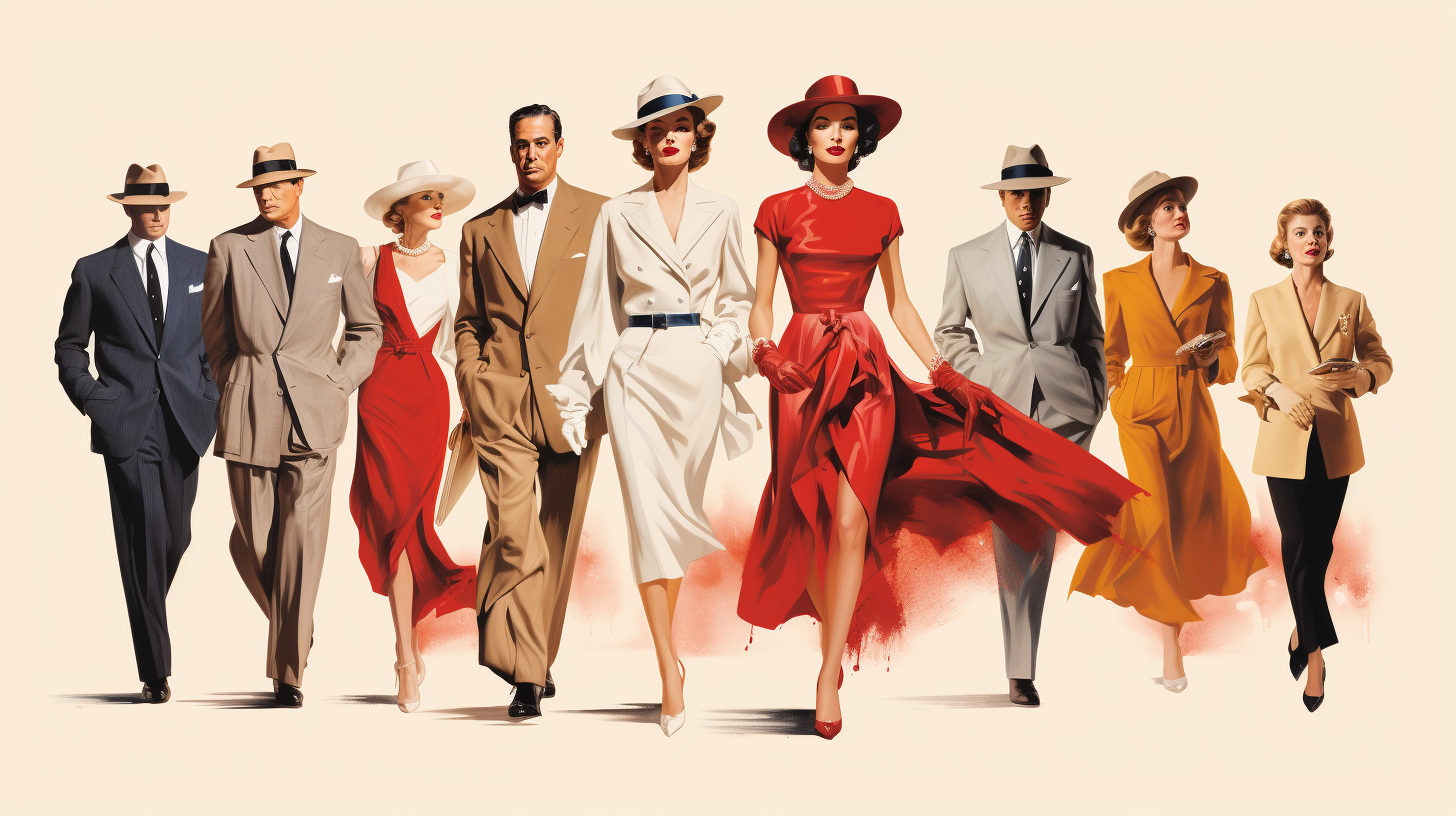
In the Spotlight: A Final Curtain Call
Summarize the Key Points: As we near the final act of this exploration, it’s time to reflect on the journey we’ve taken through the annals of fashion history. We’ve delved into the influence of Hollywood’s golden age on 1940s fashion, uncovering a world of elegance, practicality, and timeless glamour.
Hollywood’s Influence Revisited: From the starlets who became style icons to the allure of film noir, we’ve witnessed how Hollywood shaped the ideals and trends of an era. We’ve seen how leading men and leading ladies graced the screen and our collective imagination, leaving an indelible mark on fashion.
A Legacy Worth Exploring: As we conclude, I encourage you, dear readers, to continue exploring the enduring legacy of this glamorous era. The 1940s weren’t just a chapter in fashion history; they were a defining moment. It’s a reminder that style isn’t just about clothing; it’s about the stories, the culture, and the ever-evolving tapestry of our society.
The Final Frame: In the final frame of this cinematic journey, imagine a collage of iconic 1940s fashion moments. Hollywood starlets, dashing leading men, and everyday fashion enthusiasts stand side by side, a testament to the era’s influence. In the background, the Hollywood sign shines brightly, casting its eternal glow over the world of fashion. This image captures the essence of our exploration—a celebration of an era that continues to inspire and captivate.


